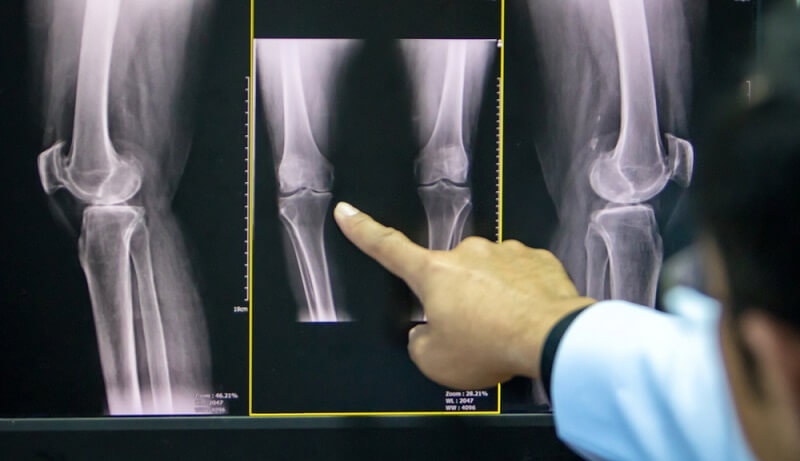Living with Osteoarthritis: Causes and Proven Treatments

Osteoarthritis (OA) is like an unwelcome guest that can intrude into our lives, causing discomfort and inconvenience. But fear not! In this informative journey, we'll delve into the world of OA simply and engagingly, covering what it is, how it affects us, and what we can do to make peace with it. So, let's start exploring how to live well with osteoarthritis!
What is Osteoarthritis (OA)?
Osteoarthritis, affectionately known as OA, is akin to the aging process of our joints. Think of it as the wrinkles of our skeletal system. While other forms of arthritis, like the fiery rheumatoid arthritis, involve the body's immune system attacking its joints, Osteoarthritis is more like a slow but persistent wear and tear process.
Our joints are these fantastic, intricate structures where bones meet and perform a graceful dance in harmony. They're equipped with a protective layer of cartilage to prevent them from rubbing painfully against each other. This cartilage is like a cushion, absorbing the shocks of our daily activities.
But with Osteoarthritis, it's as if this cushion decides to retire early. It starts to break down, wearing away like an eroding coastline. As a result, the once-smooth surfaces of our joints become rough, causing friction and discomfort. Hence, that's why OA is often called "wear-and-tear arthritis."
What are the Signs and Symptoms of Osteoarthritis?

The signs and symptoms of Osteoarthritis are like an unwelcome, persistent guest at a dinner party. They usually start subtly but gradually make their presence known. Let's dive deeper into these symptoms:
- Persistent Pain: Imagine a constant, nagging pain in your joints. It's like a steady whisper that never entirely fades away. At first, it might be as gentle as a breeze, but it can become a storm as Osteoarthritis progresses.
- Morning Stiffness: Think of waking up as embarking on a journey where your joints feel like they've spent the night at a construction site.
- Flexibility Fading: Remember when you could easily touch your toes or twist your torso like a pretzel? OA might slowly steal your abilities, making your joints feel as flexible as a rusty old gate.
- Swelling Surprise: Occasionally, Osteoarthritis invites swelling to join the festivities. One day, you might notice your joint is puffier than usual like it's hosting an unexpected guest.
- The Bone-against-Bone Tango: As OA progresses, joint cartilage may deteriorate to the point where you feel like your bones are performing an uncomfortable tango every time you move. It's a grinding or crunching sensation.
What are the Risk Factors for Osteoarthritis?
- Age: Like a seasoned traveler, OA tends to show up more frequently as you age. The joints, much like old furniture, start creaking with time.
- Gender Dynamics: Ladies, beware! OA has a soft spot for women, especially regarding the knees. It is particularly interested in making women's joints sing the OA blues.
- Extra Pounds: Carrying excess weight around is like rolling out the red carpet for OA. It loves to visit joints under pressure, and the extra weight provides the perfect welcome mat.
- Injury History: Past joint injuries, like a twisted ankle or a fractured bone, can be an open invitation for OA. It's as if these injuries leave the door unlocked for OA to enter.
- Genetic Clues: Sometimes, OA likes to run in families, suggesting it might have a genetic passport to access your joints.
How is Osteoarthritis Diagnosed?

- Patient History: They'll sit you down for a chat, wanting to hear about your symptoms and how they've been disrupting your life. Think of it as a storytelling session where your joints are the protagonists.
- Physical Discovery: Expect your healthcare provider to examine your joints thoroughly. They'll look for clues like swelling, tenderness, and limited motion.
- Radiological Investigation: In some cases, they might order X-rays or MRIs, like treasure maps revealing the extent of joint damage. These images help confirm whether OA has taken up residence in your joints.
How is Osteoarthritis Treated?
- Medication Magic: Medications like NSAIDs can be like knights in shining armor, battling pain and inflammation.
- Physical Therapy: Picture a wizard (your physical therapist) teaching you magical exercises to strengthen your muscles and increase flexibility.
- Lifestyle Enchantment: Adjusting your daily routines, using joint-friendly tools, and maintaining a healthy diet can be like casting protective spells against OA.
- Injection Charms: In severe cases, your healthcare provider may suggest injections to provide relief.
- Surgery: If OA has taken over too much territory, joint replacement surgery could be the ultimate solution.
Factors That Can Increase Your Risk of Osteoarthritis
- Weight Woes: Imagine your joints as bridges; excess weight is like placing a heavy load on them. Shedding some pounds can lighten the burden.
- Move It or Lose It: Gentle, regular exercise can be like a secret weapon against OA. It strengthens the walls of your joints.
- Guard Your Joints: Be kind to your joints by practicing good posture, wearing supportive shoes, and using tools that ease the strain.
- Injury Alert: Protect your joints from harm, and don't ignore injuries quick fixes today can prevent OA from knocking tomorrow.
- Stay Active: Keep your joints moving like a well-oiled machine to avoid rustiness, even if it means starting with easy activities.
How to Manage Osteoarthritis and Improve Quality of Life
- Knowledge is Power: I would like you to please understand your condition. Knowledge equips you to make informed decisions.
- Pain Partners: Work closely with your healthcare team to find effective pain management methods.
- Stay Active: Regular, gentle exercises prescribed by your physical therapist can be your best friend in this journey.
- Eat Smart: A balanced diet can help you maintain a healthy weight and give your joints essential nutrients.
- Lean on Support: Join a support group or confide in a therapist to navigate the emotional aspects of OA.
- Adapt and Conquer: Modify your daily routines and surroundings to accommodate your condition.
- Communication: Keep the lines of communication open with your healthcare providers. Please report any changes or concerns as soon as possible.
Conclusion
Living well with osteoarthritis is like taming a sometimes unwelcome but manageable guest. You can take charge of your joint health by understanding what OA is, recognizing its signs, identifying risk factors, and exploring treatment options. Remember, you're not alone in this journey. With the right knowledge, support, and a dash of determination, you can lead a fulfilling life despite the occasional presence of osteoarthritis.
This content was created by AI
-1717753922-r.jpg)